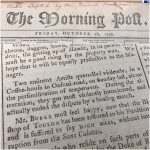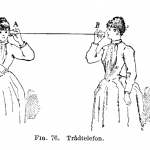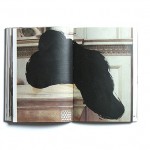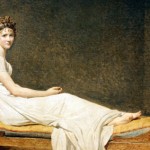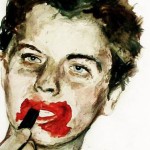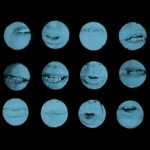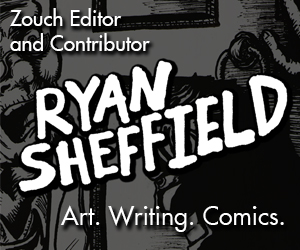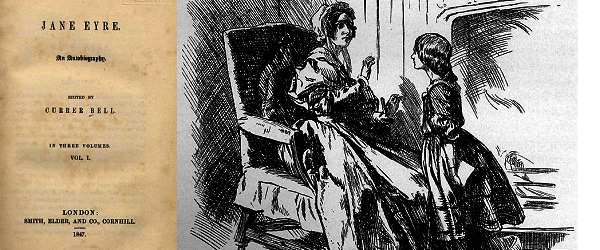
Strong Victorian Woman Sticks to Her Guns in Brontë’s Classic “Jane Eyre”
Books, ReviewsI once asked a friend of mine whether she had read “Jane Eyre”. On replying that she had not she added, “It’s really not my thing, those sort of novels”. What, I pondered, could she mean by this? Perhaps she meant books that young children are forced to study until they hate them and thus resent the offending authors for the rest of their lives. More likely, I imagine, was that she meant the sort of novels that involve quaint young women falling in love with wealthy men and subsequently stressing out for an entire novel about whether or not he likes them back, and then lo!, he marries her without a moment’s hesitation and in a truly heroic fashion. What a happy tale! If this is the case, then I can confirm that she is entirely wrong about “Jane Eyre” being that “sort” of novel because Jane is certainly not that “sort” of girl, Edward Fairfax Rochester is not that “sort” of hero, and Charlotte Brontë was not that sort of author.
Trust me on this, you want to read this book. If only to discover the shocking secret that Mr. Rochester has been keeping to himself all those years.
In the first few chapters, you realise this is no poncy novel, instead you think “by jove! That’s just mean!” Sadly this is the reality of young Jane’s life. Told in first person, Brontë’s story begins with a ten-year old Jane having a quiet little read behind a curtain because, you know, why not? Behind a big curtain seems like a nice, cosy setting to me.
Her peace is disturbed by a boy, John, with whom she is forced to live, who taunts her about her lack of wealth in comparison to his. He then forces her to stand up against the wall and throws a large, heavy book at her. She falls against the door and cuts her head. With blood dripping down her face and her neck, she is suddenly pounced upon by this aggressive young man who beats her and pulls her hair whilst she attempts to push him off.
Discovered by his mother and the maids, Jane is punished by being locked in a haunted room. He, of course, gets off scot-free. This harrowing incident at the start of the novel shows several things. Firstly, Jane is socially inferior. Secondly, she is treated extremely unfairly as a consequence. Thirdly, ok so this book isn’t one of those nice ones about love and joy. No, this book involves hurling heavy objects and blood dripping down faces. Challenged your view of “Jane Eyre” yet? Wait until you get to the good part.
Jane is a very interesting character and one of her most famous traits is that she is…plain. This is pointed out from the beginning of the book and in a very blunt manner. The maids discuss Jane’s circumstance and Jane overhears one noting “if she were a nice, pretty child, one might compassionate her forlornness; but one really cannot care for such a little toad as that”.
Her lack of beauty stays with her throughout the novel as we follow her maturation and growth into adulthood, throughout her awful time at boarding school, her content period as a teacher, right through to her gaining a position as a governess at Thornfield Hall and winning the affections of its owner, the mysterious Mr. Rochester.
Her appearance may be plain, but the same cannot be said for her personality. A meek flower Jane is not. Oh, she’s moral, but that does not mean that she’s no fun. Jane has some bite to her. We see it when she’s a child and she is about to leave her benefactress, Mrs. Reed, and Mrs. Reed’s children (you remember the book incident) to be sent away to boarding school. Rather than silently exit that chapter of her life, she instead shocks Mrs. Reed by telling her exactly what she thinks of her: “Speak I must: I had been trodden on severely […] ‘I dislike you the worst of anybody in the world […] I am glad you are no relation of mine […] If any one asks me how I liked you, and how you treated me, I will say the very thought of you makes me sick […] you are bad, hard-hearted. You are deceitful!’”
When this passage comes along in the book, it is thoroughly tempting to whoop out loud and whip out a banner that says “GO JANE GO”. The first person narrative makes you root for this child like no other novel, I can promise you that. (Also, girls, check out the bit when Jane has a slip of the tongue: Mr. Rochester asks if she thinks he’s handsome and without thinking she casually says “no”. She is absolutely mortified. We’ve all been there).
It is, of course, this complex and fascinating character that attracts the interest of Mr. Rochester, a social superior of great wealth and reputation, who enlists Jane’s help as a governess to his ward, Adele. It is also Jane’s refusal to be looked down upon that prompts her to give, in my opinion, one of the most stirring quotes from any novel and certainly a memorable one. Having fallen in love with Mr. Rochester, Jane is convinced that he is to marry someone else and that she must leave Thornfield Hall. As he stands before her questioning her necessity of departure, she states: “Do you think, because I am poor, obscure, plain, and little, I am soulless and heartless? You think wrong! – I have as much soul as you – and full as much heart! And if God had gifted me with some beauty and much wealth, I should have made it as hard for you to leave me, as it is now for me to leave you”.
But let us leave the love story part of the book there, because as great as it is, there’s something very disturbing about Jane’s stay in Rochester’s big, old, frightening house. Jane starts to hear things. Not just mice scurrying or whatever, but a strange ‘demonic’ laugh. How odd! Who would be laughing so strangely? Right outside Jane’s door at night? She’s not imagining this, someone in the dead of night, in this old, creepy house, comes up to her door whilst she’s sleeping and laughs in a demonic manner. And then what’s this? A fire! A fire in Mr. Rochester’s room! Someone set his room on fire! GOOD LORD! Someone is trying to kill Mr. Rochester! It must be that sinister servant Grace Poole, a Mrs. Danvers look-a-like. Mr. Rochester is certain of this.
But then why doesn’t he fire her? Oh, she must have been drunk. Right. Ok, Rochester. Sure, whatever you say. The twist in “Jane Eyre” is too good for me to give away so nonchalantly here, so I won’t be spoiling that for anyone. But I will say that with the eerie ‘Woman in Black’-esque setting and Brontë’s ability to draw you into the plot so well that it seems as though you’re right there with Jane, it is a damn good story with a brilliant twist.
There is so much more to “Jane Eyre” than I have been able to comment on and that is the beauty of it. Every time I read it, it seems better than the time before. And Mr. Rochester seems more attractive. But that’s beside the point. The point is do not get put off by the fact that on the back of the book cover it claims Jane to be a ‘great romantic heroine’ and the novel to be ‘a love story’. If you wanted that, you could go watch The Notebook. And who decided to put a picture of a woman sewing on the front of the book. I mean, sewing? Really? There are fires, deathly secrets, and evil people talking about everyone going to hell in this book, and someone decides to put a picture of a girl sewing on the front?
“Jane Eyre” is not for the faint hearted. It’s for anyone who has been made to feel that they aren’t good enough, pretty enough, strong enough or smart enough. It’s for everyone who has been the victim of an unfair ruling, bad judgment or bullies. It’s for those who feel taken advantage of with no gratitude given in turn, and for those who are looking for the strength to tell someone exactly how they feel. “Jane Eyre” is for and about the underdog who goes on to win. It’s that sort of novel.






